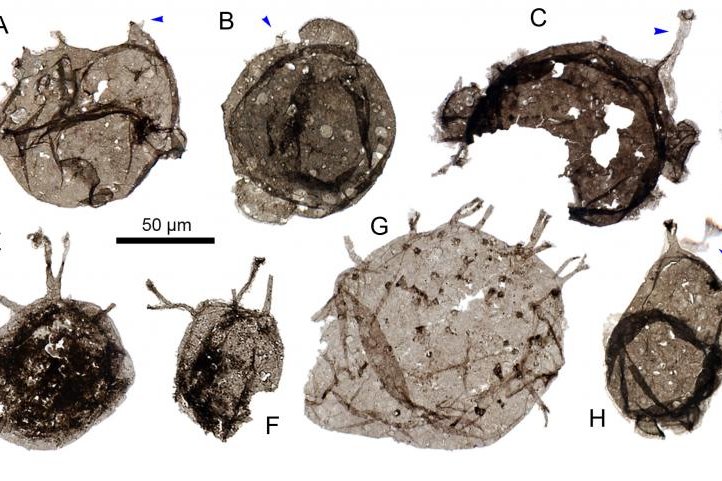An image shows several of the Tappania plana fossils unearthed at Montana's Greyson Formation in the lower Belt Supergroup. Photo by Zach Adam/Nicholas Butterfield
BOULDER, Colo., Sept. 26 (UPI) -- The emergence of the first eukaryotes is a poorly understood episode of early evolution. Newly unearthed Tappania plana fossils suggest early iterations of the ancient shapeshifter may account for the eukaryotic crown group.
Eukaryotes are organisms with complex cell structures, cells that contain membrane-bound organelles. A crown group consists of the earliest ancestors of the earliest species to which all modern species are related.
Tappania plana fossils were first discovered 20 years ago among shale deposits in China. The organism was able to develop both bulbs and tube-like structures, hence the moniker shapeshifter.
"If you can create a little ball and a little tube you can think of all the different permutations to change the shape and within that basic capacity you could reshape yourself into almost anything," Zachary Adam, an evolutionary biologist at Harvard University, said in a news release.
Adam has discovered what he believes are earlier Tappania plana fossils at a dig site in Montana where he has been excavating ancient eukaryotic fossils for several years. Adam credits his latest digging discoveries to his more gentle technique for processing ancient rocks -- one that prevents damage to delicate fossils.
"There was some suspicion that the way the rocks were being processed to look for fossils was destroying the more interesting and delicate ones," he said.
Adam's discoveries hail from the Belt Supergroup, a group of ancient sedimentary rocks dated to the early Mesoproterozoic Era, more than 1 billion years ago. Adam's site is situated in western Montana. The fossil-yielding rocks there are part of the Greyson Formation in the lower Belt Supergroup.
The Tappania plana fossils discovered in Montana are different than those unearthed in China. Adam's fossils suggest the ancient creatures could develop an outer membrane, which could function separately from the original inner membrane.
"This means there was communication across the wall, directing resources," he says. "This developmental capacity points to it being a crown group eukaryote, [as] evidenced by the expression of these morphological attributes."
Adam and his colleagues have been working hard to find an intermediary group to fill the evolutionary gap between the simplest bacterium or archaeon and the simplest eukaryote. Whether the latest Tappania plana fossils fill the gap isn't yet clear.
"Are they [Tappania plana] crown group eukaryotes -- meaning they have all the attributes of the eukaryotes we see today, or are they somewhere in between?" Adam wondered. "We don't have any examples of an intermediate between [these organisms]."
Adam says the search for more definitive answers continues.
Adam is scheduled to present his latest findings to attendees of the Geological Society of America annual meeting in Denver this week.















